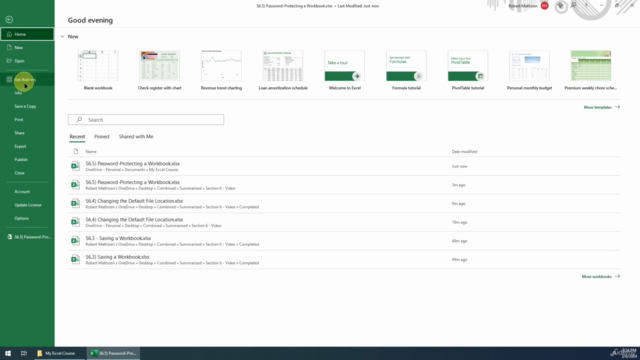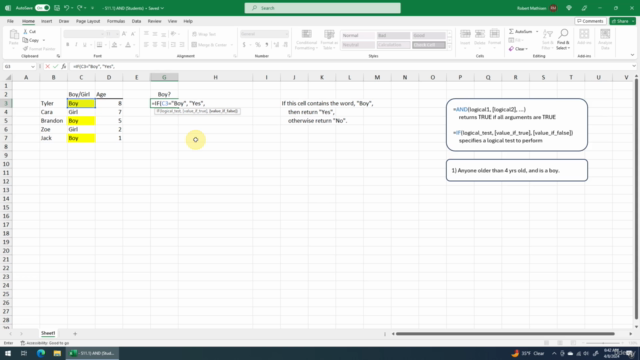Microsoft Excel: Excel Beginner Basics, Formulas & Functions
Microsoft Excel Course: From A-Z, Zero to Hero - Microsoft/Office/Excel 365, Microsoft Excel 2019, Microsoft Excel 2016
4.54 (57 reviews)

300
students
9 hours
content
Jul 2024
last update
$19.99
regular price
Why take this course?
It looks like you've listed a comprehensive range of functions from different categories in Microsoft Excel. Here's a brief explanation of each category and some of the functions within them:
Logical Functions
- AND: Returns TRUE if all parameters are TRUE, otherwise returns FALSE.
- IF: Performs a logical test and returns one value if the test is TRUE, and another if the test is FALSE.
- OR: Returns TRUE if at least one of the conditions you set up in the function is true.
- IFS: Evaluates multiple Conditional logic statements for a single result.
- Nested IF: Multiple IF functions within other IF functions to create complex logical tests.
- ISEVEN and ISODD: Check if a number is even or odd, respectively.
- ISBLANK, ISFORMULA: Determine if a cell is blank or contains a formula.
- IFERROR, ISERROR: Handle errors in formulas.
Statistical Functions
- AVERAGE: Calculates the average (mean) of the numbers specified by your arguments.
- MEDIAN: Returns the middle value when you sort and remove duplicate values from a set of numbers.
- MODE: Finds the most frequently occurring value in a data set.
- COUNT, COUNTA, COUNTBLANK: Count cells within a range that contain numbers, all cells, or non-empty cells, respectively.
- MAX, MIN: Find the maximum and minimum values in a given dataset.
Text Functions
- UPPER, LOWER, PROPER: Change the case of text strings (uppercase, lowercase, titlecase).
- LEN: Returns the number of characters in a string or text string.
- TRIM: Removes all spaces from text except for single spaces between words.
- CONCATENATE, TEXTJOIN (and the ampersand
&for concatenation): Combine two or more text strings into one. - LEFT, RIGHT, MID: Extract substrings from a specified string.
- TEXTBEFORE, TEXTAFTER: Return the part of the text string that appears before or after specified characters.
- TEXT: Convert a number to text, with options for formatting and leading zeros.
- TYPE: Determine whether a given value is text, an error value, or logical/numeric data.
- VALUE: Convert text representing a general or discrete number to its number value.
Date & Time Functions
- TODAY: Returns the serial number of the date that corresponds to the current date.
- MONTH, DAY, YEAR: Extract the month, day, and year from a date.
- WEEKDAY: Returns the day of the week for the first cell in a range as a number between 1 and 7 (Sunday=1, Saturday=7).
- DAYS: Calculate the number of days between two dates.
- EOMONTH: Return the last day of the month for a specified year or month.
- NOW, HOUR, MINUTE, SECOND: Return serial numbers representing the current date and time, hour, minute, and second, respectively.
Lookup Functions
- XLOOKUP: Looks up a value in the first column of a table and returns a value in the same row from a specified column.
- UNIQUE: Returns one item from each set of unique items within a range.
- TRANSPOSE: Transpose the data in a range or array, effectively switching rows and columns.
- VSTACK, HSTACK: Vertically or horizontally stack ranges or arrays into an array.
Each of these functions plays a crucial role in Excel's powerful feature set, allowing users to perform complex analyses, manipulate text, manage dates and times, and retrieve data from various sources. Whether you're a business analyst, a financial planner, or just someone who loves working with data, understanding how to use these functions will greatly enhance your capabilities within Excel.
Course Gallery




Loading charts...
5969584
udemy ID
12/05/2024
course created date
16/07/2024
course indexed date
Bot
course submited by